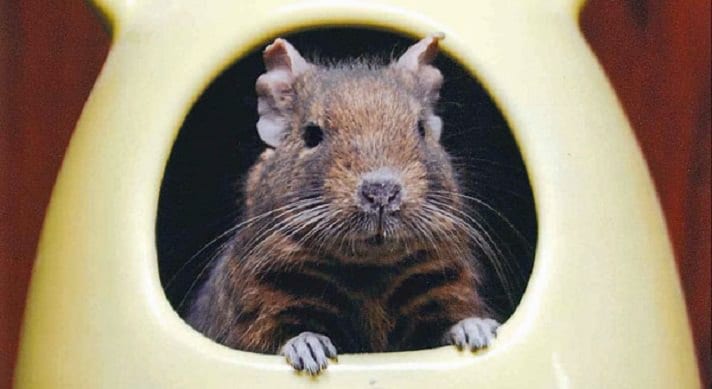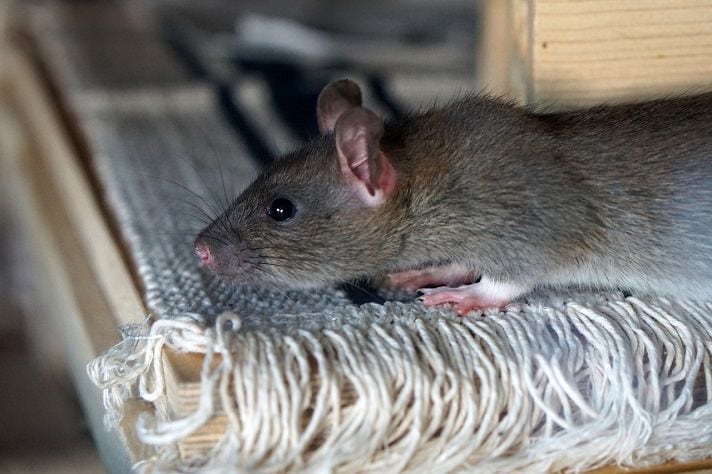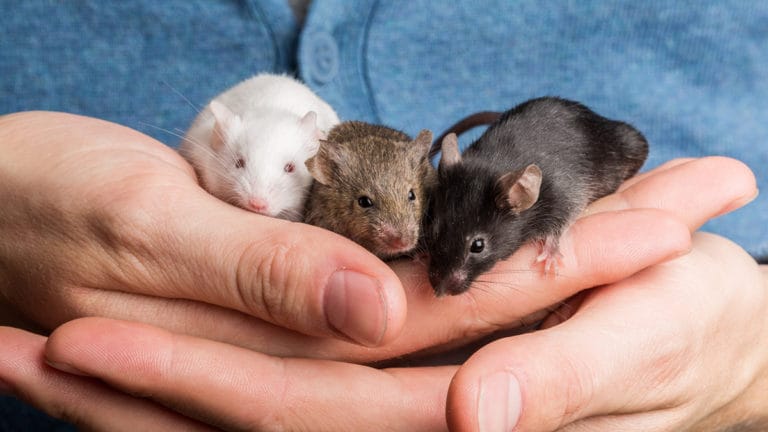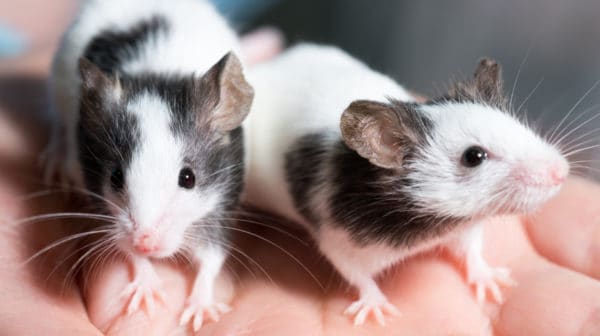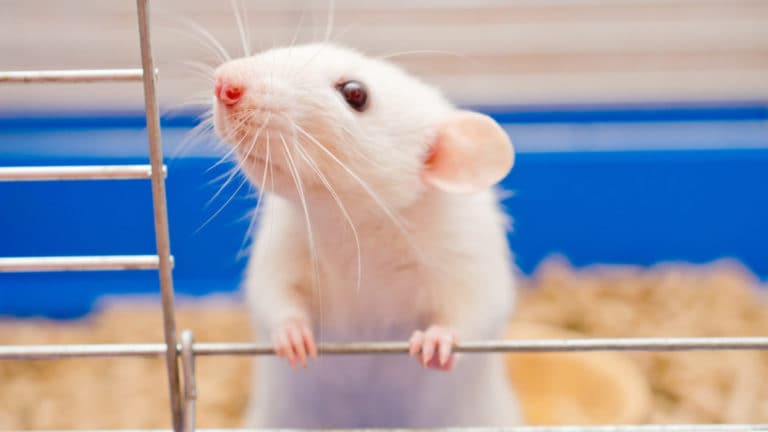Those who share their lives with a pet mouse know just how smart and inquisitive these little pipsqueaks can be. They play hard and sleep hard too! If you are new to mice as companions or are perplexed by some of the behaviors your pet mouse displays, here is a rundown of common mouse behaviors and what they might mean.
1. Amped-Up Grooming
Mice like to keep themselves clean and will groom themselves periodically throughout the day. However, a mouse that spends an inordinate amount of time vigorously grooming himself might be a nervous or stressed-out mouse.
A mouse might find a new/unfamiliar environment stressful, or he can become nervous if he is suddenly housed with other mice he does not know. He might even resort to this self-soothing behavior (constant, vigorous grooming) if he has no respite from bright lights; no den to retreat to or because of many other factors. A stressed-out mouse might even start to gnaw off his own fur and leave a bald spot in its wake. Play detective and see what might be causing your little dynamo to feel stressed.
This mouse is grooming itself after eating. Video: Phil Avent/YouTube
2. Chasing
Much like children on a playground, mice will chase one another for the sheer fun of it. This is typical behavior of young mice. Mice in the midst of a fight might also chase one another. This type of chase might be a way to show dominance. The difference between playful chasing and aggressive chasing is that mice in play don’t actually touch one another.
A mouse trying to “throw his weight” around, on the other hand, will grab onto the other’s mouse’s back end, which you might see as a damp patch of fur on the bitten mouse. A playful chase is usually also a quieter chase; mice in a squabble tend to be more vocal.
3. Standing Up
A singly kept pet mouse might stand up on his hind legs to get a better a better view of something that catches his attention or to catch a closer whiff of something he smells. If you have two or more mice, they might stand up as they prepare to fight. This type of interaction is more likely to occur between two males.
However, a fight isn’t the only reason a mouse might take a standing stance. A submissive mouse might stand as a way of showing respect for a more domineering mouse, much like a person standing up from a chair to greet someone entering the room.
4. Wagging The Tail
Dogs typically wag their tales when happy. Tail wagging in mice, however, can mean just the opposite. In mice, tail wagging is more like finger wagging in people—an expression of annoyance, or outright aggression if it is directed at another mouse.
5. Mutual Grooming
Nothing says, “I like you” in mice language more than gently grooming one another. That being said, grooming can be a complicated thing. A mouse might groom another mouse to show dominance, and an overly dominant mouse might go so far as to groom the fur right off of the target of his domineering ways. The result can be a bald spot left behind, which is referred to as barbering.
6. Burrowing
Mice are natural excavators. Your pet mouse is capable of building complex tunnels; he just needs the right items. Offer a generous layer of bedding material, and you’ll likely see your mouse fastidiously burrow his way through it to create a little place to retreat to.
7. Going Bump In The Night
Mice are mostly nocturnal, which means that unless you are a night owl, you and your mouse will likely be on different sleep schedules. The best time for interacting with your mouse will be in the evening hours. Be respectful and allow your mouse to sleep off his nighttime adventures. Some mice can be deep sleepers, and they can be found sleeping in a variety of cute positions, such curled up in a ball, cuddled up against a mouse friend or snuggle toy, or sleeping on his back or side. A sleepy mouse is an adorable sight, so you won’t mind that your little friend will prefer napping to playing while the sun is up.
8. Wiggling Whiskers
Mice don’t have great eyesight, but what they lack in visual acuity they make up in tactile sense. Their long whiskers help them navigate around their environment, especially in darkness. Mice, and rats too, use their whiskers to literally get a feel for their surroundings. A curious mouse will no doubt wiggle his whiskers around.
9. Moving Bedding Around
Don’t be surprised to see your mouse gather up some of his or her bedding and other materials and carry it to a designated corner of the cage. Your mouse is making a nest, which will likely be his favorite place to rest.
10. Teeth Grinding
A mouse’s teeth continuously grow, so teeth grinding is nature’s way of keeping them in check. A healthy diet and plentiful supply of safe items to chew also help keep tooth length in check. Mice usually grind their teeth when they are relaxed. A mouse can sometimes move his jaw back and forth so enthusiastically as he grinds his teeth that his eyeballs move in and out of their sockets!
11. Ears Up/Ears Down
The position of your mouse’s ears can be a clue as to his mood. A curious mouse is inclined to perk his ears up or forward. If the ears are down and pointed back, the mouse is showing a defensive posture, especially if this is accompanied by stiff body language; he’s saying, “Back off!”
By: Laura Doering
Feature Image: Phil Avent/YouTube
Share:

